
Kim Dunbar’s Research In Metal Anti-Cancer Agents
KimDunbar and her research team perform groundbreaking research in many areas, including spintronics and coordination chemistry. This research is leading to technological and medical advancements. Currently, she is performing research on metal anti-cancer agents, which could lead to more effective chemotherapy treatments.
Metals in Cancer Treatment
The first major discovery in treating cancer with metals came in 1960, with the discovery of Cisplatin. Metals kill cancer cells by creating oxidative stress, which the cancer cells can’t survive. Cisplatin and other platinum drugs have been at the forefront of cancer treatment, with 50-70% of chemotherapy treatments involving platinum-based therapy. Kim Dunbar explains that these drugs are helpful, but there are downsides as well. Higher doses can result in hepatotoxicity. Cancer can also develop resistance to treatment. Their efficacy is limited in some cancer types, including metastatic breast cancer. Ongoing research is vital for these reasons.
Kim Dunbar Research
Kim Dunbar’s research crosses several disciplines, including computational chemistry, biochemistry, and coordination chemistry. Computational chemistry uses computers and mathematics to learn more about compounds and how they are likely to interact with each other. Biochemistry studies the chemical processes that occur in living organisms. Coordination chemistry is the study of compounds that have a metal core surrounded by anions known as ligands.
One of Kim Dunbar’s discoveries was the presence of anion-heterocyclic ring contacts for electropositive ring systems. It’s believed that this has implications in many fields. Her research is valued by scientists around the world, and creates important building blocks for further research.

Kim Dunbar states that the ultimate goal of the research is to develop photodynamic therapy drugs. She explains that there are three approaches that are currently being studied by her team. The first is to locate binding sites for biological molecules, including DNA, with the use of X Rays and NMR. The second is the creation of redox-active compounds that cause cellular death when irradiated, but don’t present toxicity in the absence of light. The third is to design new compounds that create a red-shift in electronic transmission.
Support and Notable Achievements
Kim Dunbar received her PhD in inorganic chemistry from Purdue University. She did Postdoctoral work at Texas A&M University, where she is now a Distinguished Professor and the Davidson Professor of Science in chemistry. She is the first female chair holder at the Texas A & M College of Science. Kim Dunbar received the Basolo Award in 2019 for her work in inorganic chemistry. She has received support from many prestigious groups, including The Department of Energy and The National Science Foundation.

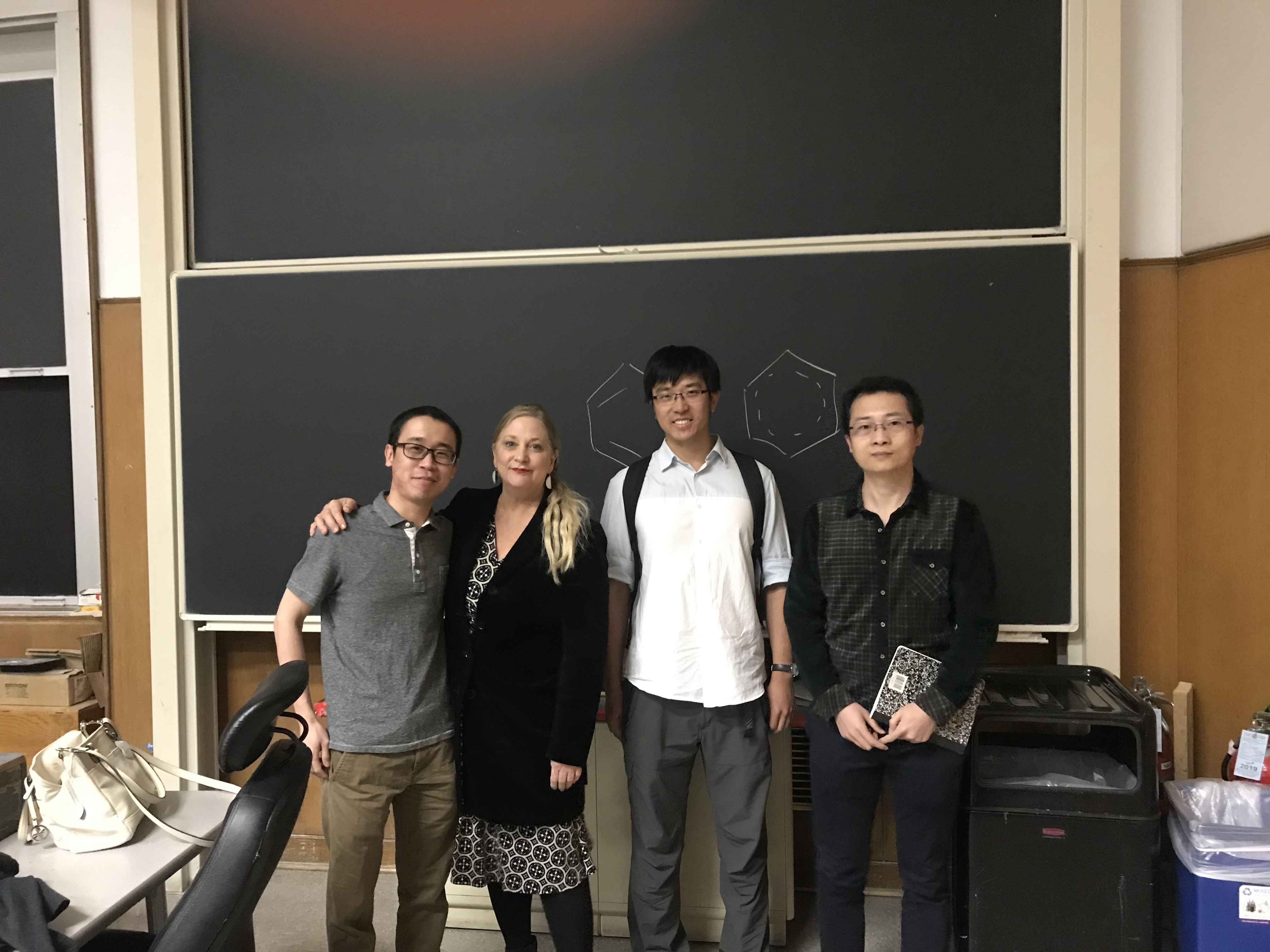
The Royal Society of Chemistry Honors Kim Dunbar
Renowned chemist Kim Dunbar has earned some of the world’s top scientific distinctions and achievements, especially in the field of inorganic chemistry. To honor her prolific career spanning more than three decades, the Royal Society of Chemistry honored her with a special issue of their publication Dalton Transactions.

The Royal Society of Chemistry’s Dalton Transactions is a journal featuring work in all areas of inorganic chemistry. Their topics shed light on subjects such as organometallic, bioinorganic and materials chemistry of the elements, with applications including synthesis, catalysis, energy conversion/storage, electrical devices and medicine. Readers of Dalton Transactions are confident in the publication’s high-quality, original articles and columns, and have long regarded it as one of the most respected scientific publications on chemistry anywhere.
Introducing the special edition, Michael Shatruk of the Department of Chemistry and Biochemistry of FSU, and Eric Schelter and Daniel Mindiola of the Department of Chemistry at the University of Pennsylvania commented on Kim Dunbar’s success and influence on their own careers.
“[We] are honored and very proud to serve as guest editors for this special issue in Dalton Transactions honoring the many contributions of Prof. Kim Dunbar, the Davidson Chair of Science and Distinguished Professor of Chemistry at Texas A&M University,” said Daniel Mindiola. “Kim is the first female faculty to hold Texas A&M’s highest academic faculty rank. She has inspired and guided our careers as scientists and instilled in us a strong foundation of the beauty of synthetic inorganic chemistry.”
He went on to mention Kim Dunbar’s research efforts, which includes fundamental coordination chemistry and its broader impacts. Her work has unveiled new understandings of the subject and its applications in chemotherapeutic reagents, molecular magnetism, synthetic conductors, and supramolecular archetypes.
Much of her current research is based on metal–metal bonds after working with pioneers in the field like the late Professor F. Albert Cotton, a W. T. Doherty-Welch Foundation Chair and Distinguished Professor of Chemistry at Texas A&M University, and Professor Richard Walton of the John A. Leighty Distinguished Professorship and Emeritus at Purdue University.
“Another of Kim’s qualities, well-known to many of her former and current students, postdocs, colleagues, and mentees, is her ability to instill excitement in those who work with her.” Daniel Mindiola said. “She is also a dedicated teacher and mentor. We remember fondly her contagious enthusiasm for sharing knowledge with students in classrooms and for learning about new results at the infamous Saturday morning Kim Dunbar group meetings.”
To date, Kim Dunbar has written or appeared in over 400 research publications in peer-reviewed and high-profile chemistry journals, as well as authoring more than 16 book chapters. In addition, she’s served on various committees and subcommittees at the American Chemical Society (ACS) and volunteered as one of the first advisors for the ACS Scholars Program.
“We are thrilled to see the many, varied contributions to this special issue that reflect the range of Kim’s contributions to the field of chemistry and the impact of her science on her friends, colleagues, former students and postdocs,” said Daniel Mindiola. “We offer our sincere congratulations to Kim on the exceptional body of work amassed through her distinguished career and we look forward to her many years of creative discoveries yet to come. We are thankful to Kim Dunbar for her unfailing support over our own careers.”
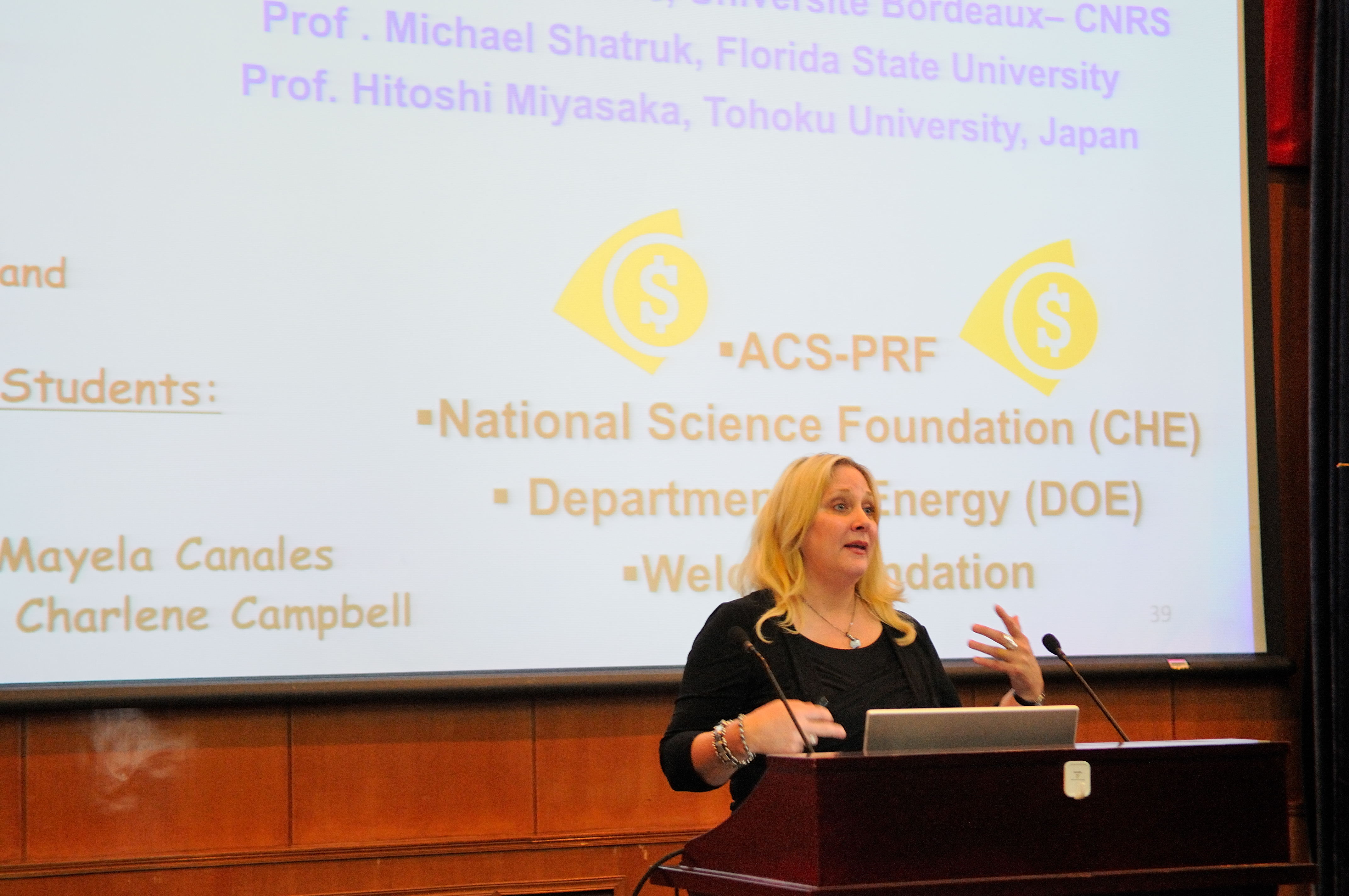
Kim Renee Dunbar Explains the Role of Nanotechnology in Modern Society
Esteemed chemist and professor at Texas A&M University, Kim Renee Dunbar shares with readers how nanotechnology is used in a range of applications today.
A world leader in the study of chemistry, Kim Renee Dunbar has made significant discoveries in the topics of synthetic, structural, and physical inorganic and bioinorganic chemistry. Below, she explains how advanced nanotechnology of the future already has practical applications in modern society.
“We see Hollywood use nanotechnology in superhero and science fiction movies, but many people don’t realize that it already helps us accomplish feats in various real-life fields, including medicine, computer technology, and national security,” says Kim Renee Dunbar.
The overarching theme of nanotechnology is controlling matter on a molecular level, ultimately giving scientists greater ability to manipulate and infuse matter with activity on a much smaller scale. Through a multidisciplinary field of study, relying on facets like supramolecular chemistry, colloidal science, and applied physics, scientists can today apply nanotech to the benefit of society on many levels. While speculation has always existed on how this novel research will actually yield practical results for people, nanotechnology is already being used in a variety of useful ways.
Kim Renee Dunbar tells us that nanotech is used in many modern sectors including energy, medicine, homeland security, and information technology among others. It’s often used in the design of computer chip layouts as well as in many commercial applications like suntan lotion, protective coatings, and cosmetic products.
“Nanotech is able to accomplish new feats in these fields because we can use it to manipulate the structure of materials to behave in certain ways or achieve certain properties on much smaller building blocks,” says Kim Renee Dunbar. “By affecting structures at such small scales, we can make materials more lightweight, more durable, more reactive to electricity, and a world of other applications.”
Today, Kim Renee Dunbar tells us nanoscale materials are being used to create ballistic energy deflection in lightweight body armor, which can also help these materials avoid wrinkles and bacterial growth. Nanotechnology is being used to create “smart fabrics,” too, which can perform tasks such as monitoring heart rhythms and capturing solar energy.
Nanoscale materials are being used to create more lightweight vehicles (from cars to space crafts), helping conserve fuel while providing thermal management and electromagnetic shielding. Gold nanoparticles are being investigated as new potential treatment options for debilitating diseases like cancer. Nanotechnology can also help doctors achieve enhanced diagnostics for earlier detection and improved success rates.
“Nanotechnology isn’t the stuff of movies and fictional stories any more,” says Kim Renee Dunbar. “It already surrounds us in various means, from scientific to commercial applications, and we’re sure to see it more heavily used in the future.”
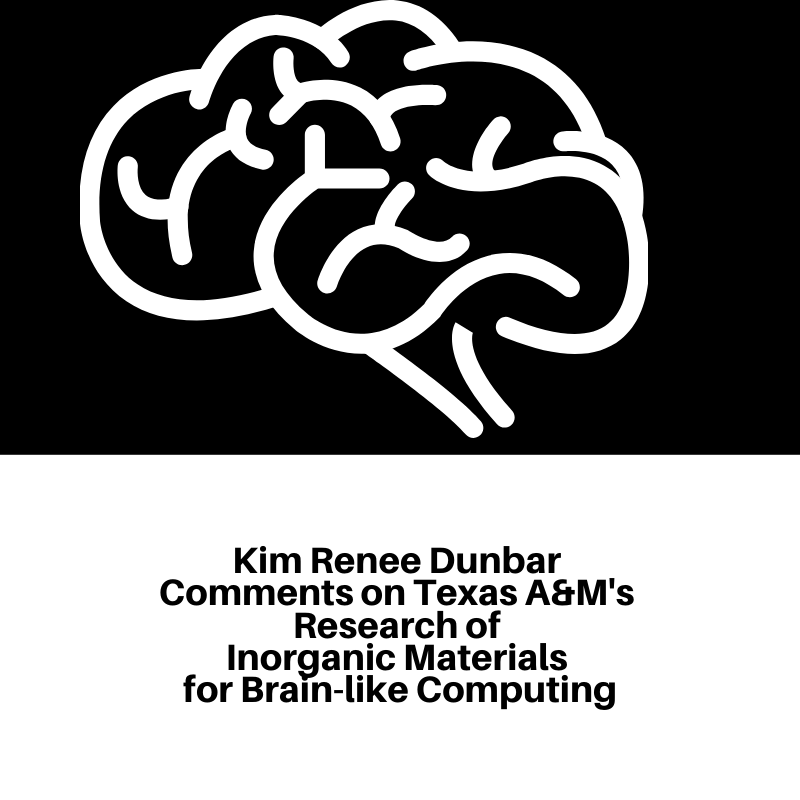
Kim Renee Dunbar Comments on Texas A&M’s Research of Inorganic Materials for Brain-like Computing
Texas A&M University’s Kim Renee Dunbar is an award-winning chemist who has unveiled critical research in inorganic chemistry for decades. Here, she comments on her university’s recent research into inorganic materials for brain-like computing.
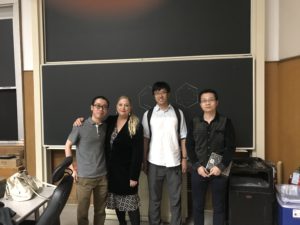 Kim Renee Dunbar has won awards from the American Chemical Society, Royal Society of Chemistry, Texas A&M University and many other respected institutions that acknowledge her impactful contributions to the field of inorganic chemistry. Besides her own work, many other scientists at her university are also renowned for their discoveries in chemistry, including recent advancements in inorganic materials for brain-like computing that hold tremendous potential for technology.
Kim Renee Dunbar has won awards from the American Chemical Society, Royal Society of Chemistry, Texas A&M University and many other respected institutions that acknowledge her impactful contributions to the field of inorganic chemistry. Besides her own work, many other scientists at her university are also renowned for their discoveries in chemistry, including recent advancements in inorganic materials for brain-like computing that hold tremendous potential for technology.
“Dr. Sarbajit Banerjee and the team behind this new research project have uncovered significant evidence that will have a global impact on computing,” says Kim Renee Dunbar. “They’ve found a materials-based mimic for the neural signals responsible for transmitting information in the brain, which can amplify our processing power in algorithms and machinery worldwide.”
The findings come from a multidisciplinary team of scientists, led by Texas A&M chemist Sarbajit Banerjee in collaboration with R. Stanley Williams, a Texas A&M electrical and computer engineer. Additionally, they’ve drawn on research from and collaborated with colleagues from all over the world to better understand brain-like computing using inorganic materials. Researching a specific solid-state material (named β’-CuxV2O5), they’ve learned about a neuron-like electrical switching mechanism that can essentially be forced into states of conducting and insulating behavior, ideal for computational commands.
Kim Renee Dunbar tells us that this activity, observed in copper ions in the material, can be used to allow neuron-like information exchange in computers. The silicon chips used in computers today may soon reach their limit in terms of energy efficiency and capability, but this new discovery from Texas A&M may point scientists to our next great solution.
“Devices that incorporate neuromorphic computing promise improved energy efficiency that silicon-based computing has yet to deliver, as well as performance improvements in computing challenges like pattern recognition, tasks that the human brain is especially well-equipped to tackle,” says research team member Abhishek Parija. “The materials and mechanisms we describe in this work bring us one step closer to realizing neuromorphic computing and in turn actualizing all of the societal benefits and overall promise that comes with it.”
Kim Renee Dunbar is excited about the research and the prospects of improved computer function it suggests, and she is extremely proud of the work of her colleagues.
“Our institution is leading the field of inorganic chemistry and proving its vital importance today and in the future,” says Kim Renee Dunbar. “The research Dr. Banerjee and his team have performed will be instrumental in understanding how computers mimicking the human brain can vastly improve processes around the world and what components we’ll need to get there.”
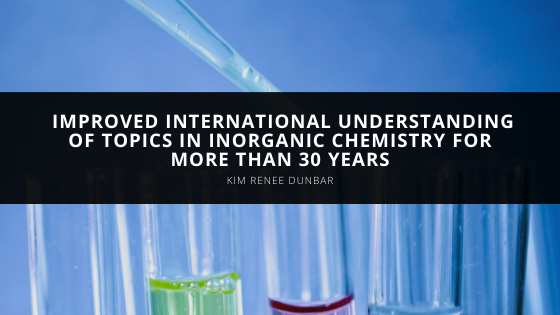
Kim Renee Dunbar Has Improved the International Understanding of Topics in Inorganic Chemistry for More Than 30 Years
As a leading chemist from Texas A&M University, Kim Renee Dunbar alters the international scientific community’s understanding of critical topics in chemistry, especially inorganic chemistry. She’s served in a number of roles at many respected institutions in her career and has earned many distinctions for her outstanding contributions spanning more than three decades.
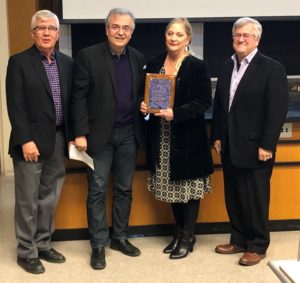 Kim Renee Dunbar has made an impressive range of insightful discoveries in the field of chemistry ever since earning her degree from Westminster College in 1980. She went on to earn her Ph.D. in inorganic chemistry at Purdue University where she studied with professor Richard Walton.
Kim Renee Dunbar has made an impressive range of insightful discoveries in the field of chemistry ever since earning her degree from Westminster College in 1980. She went on to earn her Ph.D. in inorganic chemistry at Purdue University where she studied with professor Richard Walton.
Following her Ph.D. in 1984, she next studied with F. Albert Cotton of Texas A&M University as a postdoctoral research associate in 1985. However, following the completion of her associate work at TAMU in 1986, Kim Renee Dunbar spent twelve years with Michigan State University and eventually earned the title of distinguished professor in 1998. As a professor, she was invited back to Texas A&M University to take on a permanent position, where she became the first female chair holder of the College of Science at the university.
Dunbar has earned many top distinctions for her contributions to science, and today she holds the Davidson Chair of Science and the Distinguished Professorship of Chemistry. She’s earned the Award for Distinguished Service in the Advancement of Inorganic Chemistry from the American Chemical Society and Texas A&M Former Students’ Network Eminent Scholar Award. In addition, Kim Renee Dunbar received an honorary doctorate degree from Westminster College in 2012.
She’s also served integral roles at many leading publications where she contributes broadly to the development of inorganic coordination chemistry and materials science. She spent years serving as the Associate editor for the ACS Inorganic Chemistry journal and to date has contributed to more than 280 respected publications.
In her research, Kim Renee Dunbar focuses on areas of chemistry such as magnets and conductors, organocyanide based functional materials, interactions with DNA in metal bonded system and conciliation by interactions in anions, and aromatic ligands in supramolecular structures and properties. This has led her to new conclusions on metal-based drugs in medicine and synthetic challenges in biological chemistry.
From Texas A&M University, Kim Renee Dunbar leads emerging scientists to new discoveries that are used to pioneer solutions to age-old problems in labs and facilities across the globe. The Dunbar Research Group finds backing from major institutions like the United States Department of Energy, the American Chemical Society, the Welch Foundation, the National Institutes of Health, and the National Science Foundation, among others. She and her team’s work has gained international recognition and continues to open doors and create potentials for scientists everywhere.
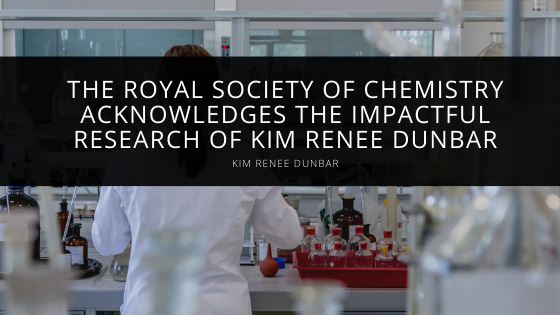
Kim Renee Dunbar Invited to Speak at Inaugural Chemistry Lecture at Westminster College
The Ken and Nancy Long Chemistry Lecture has been a major event at Westminster College for more than a decade, assembling some of the greatest minds in chemistry to share their insights on critical subjects. Renowned chemist Kim Renee Dunbar of Texas A&M University was invited to speak during the inaugural event in 2008, setting the bar for the caliber of guest speakers invited in the future.
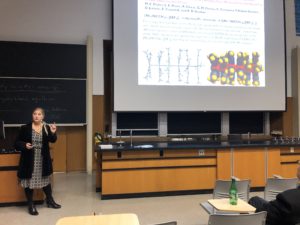 Westminster College is one of the oldest and most prominent educational facilities in the country. It had its start more than a century and a half ago and has developed a reputation for quality and impactful education ever since. Each year, the college hosts the Ken and Nancy Long Chemistry Lecture, which invites world-class scientists and professionals from all over to speak on a given topic. For the inaugural event, the college selected renowned chemist Kim Renee Dunbar to speak.
Westminster College is one of the oldest and most prominent educational facilities in the country. It had its start more than a century and a half ago and has developed a reputation for quality and impactful education ever since. Each year, the college hosts the Ken and Nancy Long Chemistry Lecture, which invites world-class scientists and professionals from all over to speak on a given topic. For the inaugural event, the college selected renowned chemist Kim Renee Dunbar to speak.
A professor and researcher at Texas A&M University, Kim Renee Dunbar was invited to lecture at Westminster College to share her critical insight and research on inorganic chemistry with the assembly. Navigating complicated topics with ease and eloquence, and sharing insightful perspectives on chemistry, she demonstrated the caliber of professionals and scientific research the college hopes to foster in its own programs.
Known in labs, facilities, and classrooms around the world for her breakthrough research in inorganic chemistry, Kim Renee Dunbar has helped improve the scientific understanding and application of the subject for decades. She’s won a number of top distinctions and awards across her career including being the first-ever guest speaker during the inaugural Ken and Nancy Long Chemistry Lecture at Westminster College.
The lecture series is funded by Dr. Ken Long, Westminster professor of chemistry emeritus, and his wife, Nancy, to invite outstanding chemists to speak to Westminster students. It was created as a platform for outstanding chemists to communicate directly with Westminster students on their esoteric subjects, share the work they’ve conducted over the years, and inspire future scientists through quality education. In her lecture, Kim Renee Dunbar spoke about the novel potentials in the fields of medicine and inorganic chemistry, and shared her own research project with the audience, “Metals in Medicine throughout the Ages: From Ancient Egypt to Victorian England to the 21st Century.”
The research conducted by Kim Renee Dunbar and her team at Texas A&M University has vastly improved our understanding of applications in chemistry, especially inorganic chemistry. Dr. Ken Long, who worked with Dunbar at Westminster, said of her:
“Kim Renee Dunbar was outstanding as a student and has been highly successful as a graduate. We are proud of her accomplishments and are delighted she is the first Ken and Nancy Long Chemistry Lecturer.”
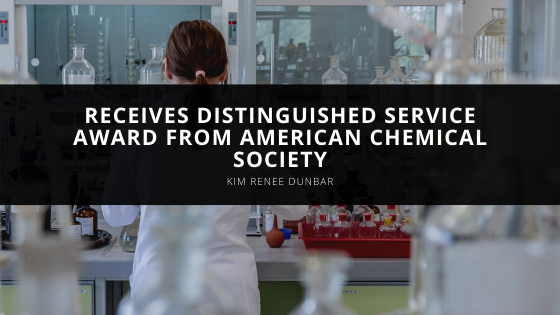
Kim Renee Dunbar Receives Distinguished Service Award from American Chemical Society
The American Chemical Society (ACS) has long served as a respected international organization gathering the top minds in science and chemistry. To honor her outstanding contributions to the field, ACS bestowed their Distinguished Service Award on Kim Renee Dunbar of Texas A&M University.
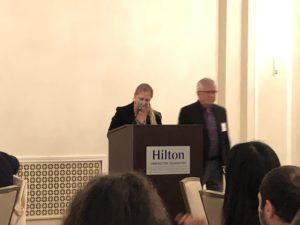 Kim Renee Dunbar is a world-renowned scientist and professor at Texas A&M University whose research team has uncovered new, breakthrough applications in inorganic chemistry. Her discoveries, which are applied in labs and facilities around the world, have earned Dunbar many distinctions and top accolades over the years.
Kim Renee Dunbar is a world-renowned scientist and professor at Texas A&M University whose research team has uncovered new, breakthrough applications in inorganic chemistry. Her discoveries, which are applied in labs and facilities around the world, have earned Dunbar many distinctions and top accolades over the years.
Her work has ultimately helped shape a range of new solutions in fields like medicine and materials. And to honor her achievements in the advancement of inorganic chemistry, Dunbar received the prestigious ACS Distinguished Service Award. The award was established in 1963 through funds from anonymous donors, but after two years Mallinckrodt, Inc. supported the award until 1997 when Strem Chemicals, Inc. assumed its sponsorship.
“I have been passionate about inorganic chemistry since I was an undergraduate, and I could
not imagine another career,” Kim Renee Dunbar said. “I deeply admire the previous recipients
of the award, all of whom set the bar very high for all of us in inorganic chemistry and inspired
me greatly. I am highly honored to receive this award, and the many excellent students,
postdocs, and coworkers who have contributed to the success of my research program share it
with me.”
Today, the ACS award remains one of the most respected distinctions in chemistry that seeks to acknowledge the work of scientists who have significantly advanced inorganic chemistry. Kim Renee Dunbar’s and her research team’s findings have benefitted the entire international scientific community, qualifying her to receive the prestigious award. Recipients of the ACS award receive $5,000 and a certificate declaring their achievement in addition to up to $1,000 for travel expenses to and from the award ceremony.
Other rules for eligibility require nominees like Kim Renee Dunbar to demonstrate landmark contributions to the advancement of inorganic chemistry through teaching, writing, research, and the administration of chemistry. Nominees also must be ACS members prior to being nominated.
“She stands as an exemplary role model for young women who aspire to academic
positions in chemistry,” says Jeffrey R. Long of the University of California, Berkeley,
who is a longtime colleague.
Besides the ACS award, Kim Renee Dunbar has also won a Camille & Henry Dreyfus Teacher-Scholar Award, an Alfred P. Sloan Foundation Fellowship, and fellowships in both the American Association for the Advancement of Science and the American Institute of Chemists.
Dunbar is also a two-time recipient of the Texas A&M Association of Former Students
Distinguished Achievement Award and the first recipient ever of the Texas A&M Women Former Students’ Network Eminent Scholar Award. She’s taught at and conducted research from Texas A&M University for decades and has earned the institution’s highest academic faculty rank, the Distinguished Professor of Chemistry title.

Dr. Kim Renee Dunbar Leads Esteemed Texas A&M University-Based Research Group
For decades, Dr. Kim Renee Dunbar has helped further the international scientific community’s understanding of inorganic chemistry and has received several awards and titles honoring her contributions. From Texas A&M University, she leads the Dunbar Research Group and makes strides in the field of chemistry for current and future applications.
 Dr. Kim Renee Dunbar’s career in chemistry extends back decades where she’s contributed landmark research and application, especially in the field of inorganic chemistry. She is a leading chemistry professor and department head at Texas A&M University where she also leads a student-based research team.
Dr. Kim Renee Dunbar’s career in chemistry extends back decades where she’s contributed landmark research and application, especially in the field of inorganic chemistry. She is a leading chemistry professor and department head at Texas A&M University where she also leads a student-based research team.
In a few short years, the Dunbar Research Group has improved the scientific understanding of many topics in inorganic chemistry and have achieved lofty recognition in the scientific community. Today, they are backed by a handful of major institutions that ensure Dr. Kim Renee Dunbar and her team can continue increasing our understanding of critical elements in chemistry. Among their notable contributors are the United States Department of Energy, the American Chemical Society, the Welch Foundation, the National Institutes of Health, and the National Science Foundation.
The research she and her team have conducted go on to help develop projects that aid humanity through stronger materials, disease treatments, novel compounds and much more.
The Dunbar Group focuses on topics in inorganic chemistry with a special emphasis on coordination chemistry. In their research, they attempt to understand and be more equipped to explain relationships between molecular structure and physical properties to the masses. Dr. Kim Renee Dunbar facilitates research on subjects like molecular magnetism, anti-cancer compounds, and multifunctional materials with organic radicals.
The students that Dunbar brings onto the research group have the benefit of expanding their chemical knowledge outside the boundaries of their individual degrees and are able to serve as an instrumental component of an internationally-recognized scientific research group. While involved, they gain experience in several state-of-the-art techniques and instrumentation, which include air-free synthesis (glovebox and Schlenk-line), X-ray crystallography, SQUID magnetometry, mass spectrometry, computational chemistry, cell viability assays, electrochemistry, and electronic, EPR, infrared, and NMR Spectroscopies. In addition to their degrees, this exclusive experience equips them for careers in chemistry and provides a launch pad for continued education.
Dr. Kim Renee Dunbar is a qualified leader and is well respected by her team, her university, and the larger scientific community. She was named a Davidson Professor of Science in 2004 and achieved the honor of being the first female chair-holder of the Davidson Chair in Science. Dunbar has also been named a Distinguished Professor of Chemistry, Texas A&M University’s highest academic faculty rank, and received the ACS Award for Distinguished Service in the
Advancement of Inorganic Chemistry among a range of other accreditations. Leading the Dunbar Research Group, she improves the knowledge of inorganic chemistry in labs, facilities, and educational institutions all over the globe.
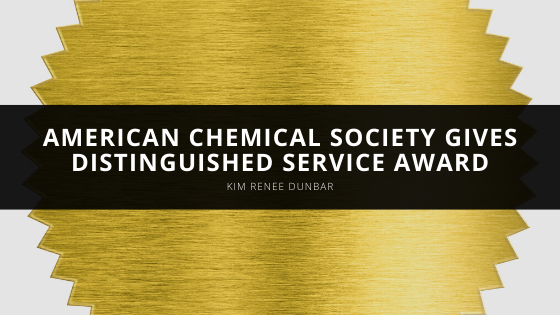
American Chemical Society Bestows Kim Renee Dunbar with Distinguished Service Award
Kim Renee Dunbar is a world-renowned chemist and professor at Texas A&M University where she and her research team contribute landmark discoveries to the international scientific community. For her outstanding contributions to the study of inorganic chemistry, the American Chemical Society bestowed Dunbar with the prestigious Distinguished Service Award.
 A chemistry professor at Texas A&M University Kim Renee Dunbar has earned many top accolades and titles across a career spanning decades of research. Her contributions to the field of inorganic chemistry are known in labs and facilities around the world and have helped shaped a range of new solutions in fields like medicine. To honor her achievements in the advancement of inorganic chemistry, Dunbar received the prestigious ACS Distinguished Service award.
A chemistry professor at Texas A&M University Kim Renee Dunbar has earned many top accolades and titles across a career spanning decades of research. Her contributions to the field of inorganic chemistry are known in labs and facilities around the world and have helped shaped a range of new solutions in fields like medicine. To honor her achievements in the advancement of inorganic chemistry, Dunbar received the prestigious ACS Distinguished Service award.
“I have been passionate about inorganic chemistry since I was an undergraduate, and I could not imagine another career,” Kim Renee Dunbar said. “I deeply admire the previous recipients of the award, all of whom set the bar very high for all of us in inorganic chemistry and inspired me greatly. I am highly honored to receive this award, and the many excellent students, postdocs, and coworkers who have contributed to the success of my research program share it with me.”
The ACS award stands as one of the most respected distinctions in chemistry that recognizes scientists who have advanced inorganic chemistry and provided outstanding research that benefits the entire international scientific community. Recipients receive $5,000 and a certificate declaring their achievement in addition to $1,000 for travel expenses to the award ceremony.
Eligibility for the ACS award requires nominees like Kim Renee Dunbar to demonstrate landmark contributions to the advancement of inorganic chemistry through teaching, writing, research, and the administration of chemistry. Nominees must also be ACS members prior to being nominated. The ACS award was established in 1963 through funds from anonymous donors. After two years, Mallinckrodt, Inc. supported the award until 1997 when Strem Chemicals, Inc. assumed its sponsorship.
Besides the respected ACS award, Kim Renee Dunbar has also won a Camille & Henry Dreyfus Teacher-Scholar Award, an Alfred P. Sloan Foundation Fellowship, and fellowships in both the American Association for the Advancement of Science and the American Institute of Chemists. In addition, she’s a two-time recipient of the Texas A&M Association of Former Students Distinguished Achievement Award as well as the first recipient ever of the Texas A&M Women Former Students’ Network Eminent Scholar Award. She’s taught at and conducted research from Texas A&M University for decades and has earned the institution’s highest academic faculty rank, the Distinguished Professor of Chemistry title.
“She stands as an exemplary role model for young women who aspire to academic positions in chemistry,” says Jeffrey R. Long of the University of California, Berkeley, who is a longtime colleague.
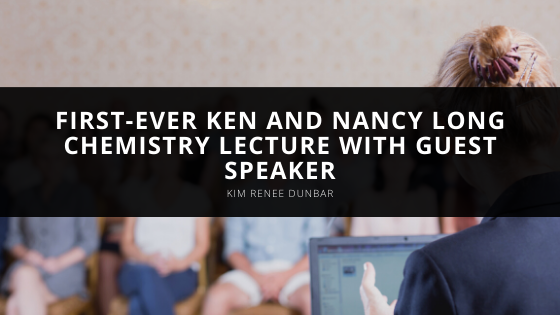
First-Ever Ken and Nancy Long Chemistry Lecture Featured Kim Renee Dunbar as Guest Speaker
Across a career spanning decades of research, Kim Renee Dunbar has had a tremendous impact on the international scientific community’s understanding of inorganic chemistry. Recognized for her distinguished contributions to science, Dunbar was asked to be a guest speaker during Westminster College’s first inaugural Ken and Nancy Long Chemistry Lecture.
 Over the years, Kim Renee Dunbar has been awarded a number of titles and distinctions for her impactful work in inorganic chemistry, most notably at Texas A&M University in College Station. Among other invitations to top scientific lectures around the world, she was asked to share her insight with the students and faculty of Westminster College for the first-ever Ken and Nancy Long Chemistry Lecture.
Over the years, Kim Renee Dunbar has been awarded a number of titles and distinctions for her impactful work in inorganic chemistry, most notably at Texas A&M University in College Station. Among other invitations to top scientific lectures around the world, she was asked to share her insight with the students and faculty of Westminster College for the first-ever Ken and Nancy Long Chemistry Lecture.
Dr. Ken Long, who worked with Dunbar at Westminster, said, “Kim Renee Dunbar was outstanding as a student and has been highly successful as a graduate. We are proud of her accomplishments and are delighted she is the first Ken and Nancy Long Chemistry Lecturer.”
A national leader in educational excellence, guest speakers like Kim Renee Dunbar demonstrate the caliber of professionals they wish to foster through their programs. Dunbar was invited to speak at Westminster College to share her critical insight and research on inorganic chemistry with the assembly, helping uphold the institution’s reputation for excellence.
The lecture series is funded by Dr. Ken Long, Westminster professor of chemistry emeritus, and his wife, Nancy, to invite outstanding chemists to speak to Westminster students. During the lecture, Dunbar spoke about her research, “Metals in Medicine throughout the Ages: From Ancient Egypt to Victorian England to the 21st Century.”
Westminster College has set the bar for higher education since it first opened in 1852 in New Wilmington, Pennsylvania. With an affiliation with the Presbyterian Church (U.S.A.), they are one of the earliest coeducational colleges in the nation, founded to promote the spirit and values of Christianity while focusing on the development of the individual – intellectually, spiritually, and socially – which still rings true today.
Westminster is proud of the rich heritage it provides, and highly optimistic about its future. Serving the diverse needs of its students has enabled Westminster to become one of the nation’s finest liberal arts colleges. Today, it is recognized for its high-level presence and is a top-tier liberal arts college as well as a national leader in graduation rate performance, according to U.S. News Best Colleges guide. Westminster is also honored as one of “The Best 379 Colleges” by The Princeton Review, and is named to the President’s Honor Roll for excellence in service learning.
Westminster College draws in world-class professionals such as Kim Renee Dunbar to encourage independent thinking and deliver superb education to its student body. Having Dunbar speak at the institution’s first Ken and Nancy Long Chemistry Lecture is testament to their efforts to create an exceptional learning environment for students, alumni, and staff.
